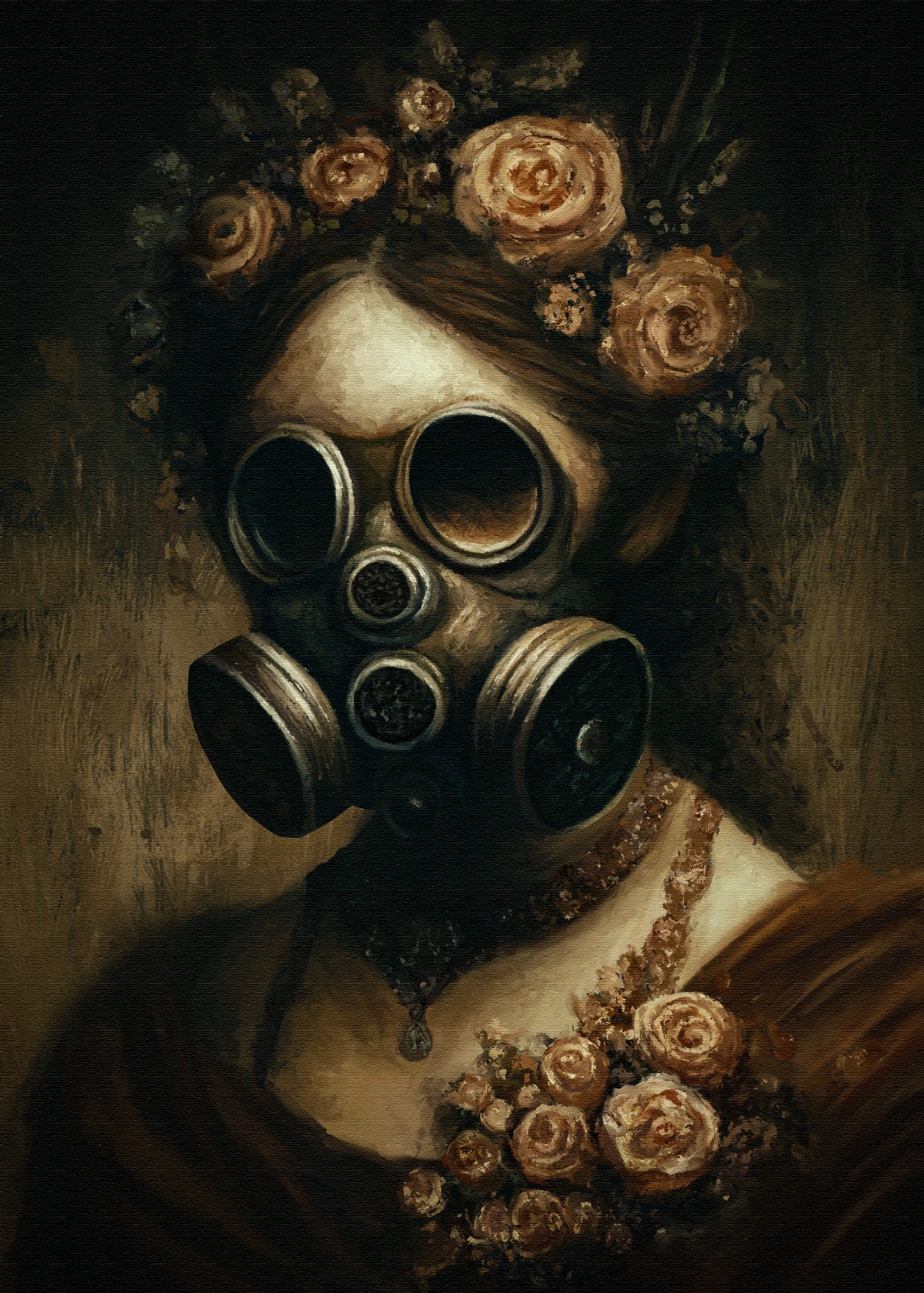
Desolation (2024)
Desolation (2024) merges beauty and decay into a single, suffocating image. Through the fusion of floral adornment and industrial ruin, Georgina M. Cox transforms the classical portrait into a meditation on survival, femininity, and the aesthetics of extinction.
⤷ In Desolation, I wanted to explore the fragility of beauty within a dying world. The painting draws on the structure of 17th-century portraiture but replaces its symbols of grace with emblems of survival. The figure, adorned in roses and lace, wears a gas mask where a face should be. This contrast between delicacy and machinery became the emotional axis of the piece.
The mask acts as both armour and silence. It hides the self in order to preserve it, turning the body into a relic of endurance. Around it, the flowers bloom in unnatural permanence, their softness preserved through decay. I wanted them to feel fossilised, as though even nature has learned to adapt to a poisoned atmosphere.
The palette is restrained, built on umber, ochre, and muted golds. It recalls the aged warmth of Baroque oil painting while introducing an industrial undertone. The light falls unevenly, illuminating the metal’s cold sheen against the warmth of skin and fabric. This interplay between organic and mechanical forms became the central visual language of the work.
Symbolically, Desolation is about the romanticisation of ruin. It examines the human impulse to find beauty in the aftermath and to preserve tenderness even when it no longer belongs. The floral wreath, traditionally a symbol of purity or devotion, becomes a funeral crown here—a final act of grace in a world without air.
Thematically, the piece continues my interest in depicting women as witnesses of collapse rather than victims of it. The subject is still, dignified, and composed, but her silence feels heavy. The painting asks what resilience looks like when preservation requires transformation.
Ultimately, Desolation (2024) is a portrait of adaptation. It mourns what has been lost, yet it also celebrates the persistence of beauty even in its most corrupted forms.
0 Comments Add a Comment?